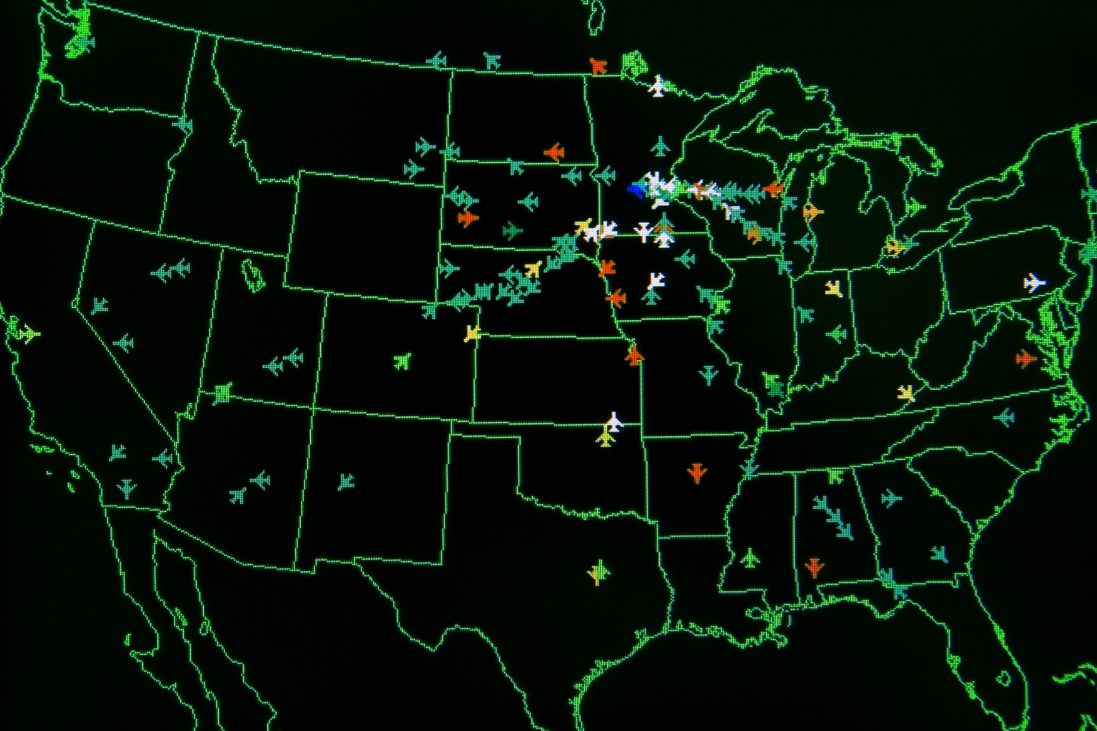
The Traffic Alert and Collision Avoidance System (TCAS), also known as the Airborne Collision Avoidance System (ACAS) is an airborne system designed to increase cockpit awareness of nearby aircraft and service as a last defense against mid-air collisions. The system monitors airspace around an aircraft for other transponder equipped aircraft that may present a collision threat. TCAS operates independently of ground-based equipment to provide pilots with guidance on how to avoid a potential collision.
TCAS News
NTSB Issues Final Rule modifying TCAS reporting Requirements
Dec. 15, 2015
The NTSB published a direct final rule removing a requirement for all TCAS Resolution Advisories (RA) issued in class A airspace to be reported. Previously operators were required to report a TCAS RA was issued when either (i) an aircraft being operated on an instrument flight rules (IFR) flight plan needed to comply with the RA to avert a substantial risk of collision between two or more aircraft, or (ii) an aircraft was operating in class A airspace. The Federal Register notice explains the original rule was only intended to allow the NTSB to identify, evaluate, and investigate serious incidents where aircraft maneuvers were required to avert a substantial risk of collision. The NTSB believes this goal can still be accomplished without requiring all RAs issued in class A airspace to be reported.
Review the Direct Final Rule
FAA Issues Notice to Increase TCAS II Awareness
June 25, 2012
In collaboration with NBAA, the FAA is working to educate aircraft operators about the importance of reviewing information on the Traffic Alert and Collision Avoidance System (TCAS) II in operations manuals and training programs. The FAA notice explains that operators should consult resources, such as Advisory Circular 120-55 to ensure their TCAS policies and procedures are consistent with FAA guidance. Through the FAA TCAS Operational Performance Assessment program, the agency has determined that aircraft operated under Parts 91, 91K and 135 of the Federal Aviation Regulations are involved in a high proportion of Resolution Advisories (RAs).
- Review the FAA TCAS Notice
- Revew the FAA TCAS Awareness PowerPoint (3.2 MB, PDF)
- Review NBAA Flight Plan Podcast on FAA TCAS Outreach
TCAS Technology and Requirements
The first generation technology, known as TCAS I is able to monitor the traffic situation around an aircraft and provide details on the bearing and altitude of nearby traffic. It can also generate collision warnings known as a “Traffic Advisory” (TA). When a TA is issued, the pilot is notified of the threat, but must determine the necessary collision avoidance procedure.
The second generation technology, known as TCAS II provides the pilot with specific instructions on how to avoid the conflict with traffic. These instructions are known as a “Resolution Advisory” (RA) and may instruct the pilot to descend, climb, or adjust vertical speed. TCAS II systems are also able to communicate with each other to ensure that the RA provided to each aircraft maximizes separation.
Regulatory Requirements
Aircraft registered in the U.S. and operating under Part 91 of the FARs are not required to be equipped with TCAS. However, if an aircraft is equipped, it must be an approved system operating under the regulations contained in FAR 91.221. For operations conducted under FAR part 135, the aircraft must be equipped with TCAS if it is turbine powered and has 10 to 30 passenger seats (FAR 135.180). Whether the aircraft is operated under part 91 or part 135, if it is equipped with TCAS II, it must be version 7 (TSO C-119).
The European Aviation Safety Agency (EASA) requires ACAS II (effectively TCAS II, version 7.1) for all fixed wing turbine powered aircraft that have a maximum takeoff weight of greater than 5,700 kg (12,566 lbs) or have more than 19 passenger seats. This requirement applies to all flights conducted in European Union airspace.
ICAO Standards
Operators should also be familiar with the International Civil Aviation Organization (ICAO) Standards and Recommended Practices (SARPS) regarding TCAS/ACAS.
For non-commercial aircraft, the SARPS in Annex 6, Part 2 state:
Annex 6 Part II: International General Aviation Aeroplanes
3.6.10 Aeroplanes required to be equipped with
an airborne collision avoidance system (ACAS)
3.6.10.1 Recommendation.— All turbine-engined aeroplanes of a maximum certificated take-off mass in excess of
15 000 kg, or authorized to carry more than 30 passengers, for which the individual airworthiness certificate is first issued
after 24 November 2005, should be equipped with an airborne collision avoidance system (ACAS II).
3.6.10.2 All turbine-engined aeroplanes of a maximum certificated take-off mass in excess of 15 000 kg or authorized to
carry more than 30 passengers, for which the individual airworthiness certificate is first issued after 1 January 2007, shall be
equipped with an airborne collision avoidance system (ACAS II).
3.6.10.3 Recommendation.— All turbine-engined aeroplanes of a maximum certificated take-off mass in excess of
5 700 kg but not exceeding 15 000 kg, or authorized to carry more than 19 passengers, for which the individual airworthiness
certificate is first issued after 1 January 2008, should be equipped with an airborne collision avoidance system (ACAS II).
For commercial aircraft, the SARPS in Annex 6, Part 1 state:
Annex 6 Part I: International Commercial Air Transport- Aeroplanes
6.18 Aeroplanes required to be equipped with
an airborne collision avoidance system (ACAS II)
6.18.1 From 1 January 2003, all turbine-engined aeroplanes of a maximum certificated take-off mass in excess of
15 000 kg or authorized to carry more than 30 passengers shall be equipped with an airborne collision avoidance system
(ACAS II).
6.18.2 From 1 January 2005, all turbine-engined aeroplanes of a maximum certificated take-off mass in excess of
5 700 kg or authorized to carry more than 19 passengers shall be equipped with an airborne collision avoidance system
(ACAS II).
6.18.3 Recommendation.— All aeroplanes should be equipped with an airborne collision avoidance system (ACAS II).
6.18.4 An airborne collision avoidance system shall operate in accordance with the relevant provisions of Annex 10,
Volume IV.


 International Business Aviation Council Ltd.
International Business Aviation Council Ltd.